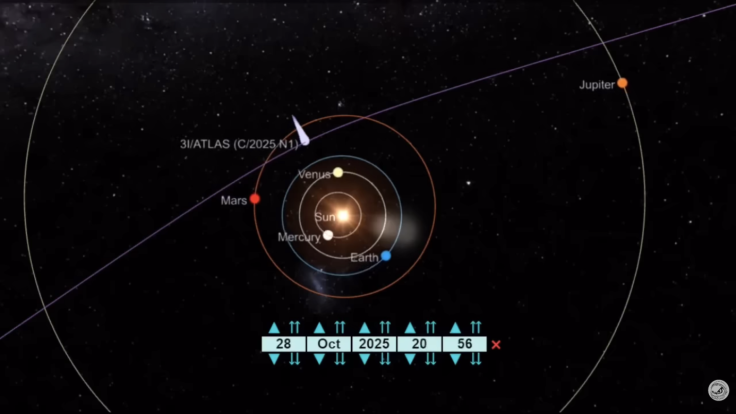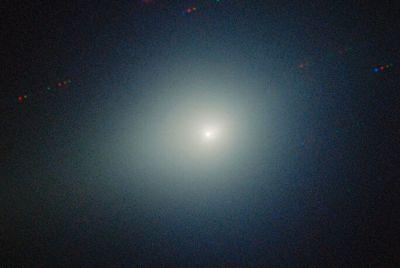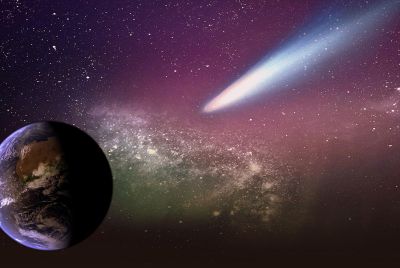'Alien Mothership' Hypothesis Test: Why 3I/ATLAS's Perihelion Thrust Is Crucial

Astronomers are preparing for a decisive test as interstellar object 3I/ATLAS reaches its perihelion on 29 October 2025, when it will pass behind the Sun.
The comet—formally designated C/2025 P1 (ATLAS)—is travelling at extraordinary speed on a hyperbolic orbit, meaning it originated beyond our Solar System.
While most scientists classify it as a natural comet, Harvard astrophysicist Avi Loeb has proposed a striking alternative: that 3I/ATLAS might be an alien 'mothership' capable of controlled propulsion.
His hypothesis hinges on what happens at perihelion—the one moment when a deliberate thrust could be detected.
Loeb's team outlined their hypothesis in a paper posted to arXiv, a pre-print research repository.
The Perihelion Thrust Hypothesis
In a July 2025 paper, Loeb and his co-authors proposed that 3I/ATLAS could perform a reverse Solar Oberth manoeuvre--a type of high-energy thrust near the Sun.
The theory suggests that if the object accelerates or decelerates at perihelion (its closest approach to the Sun), it could change its trajectory in a way impossible for a passive comet.
As Loeb explained in a Medium essay, thrusting at perihelion would yield the maximum boost in kinetic energy due to the Oberth effect, a principle well known in spacecraft mechanics.
The perihelion event is expected to occur on 29 October, when the object will be on the opposite side of the Sun, hidden from Earth's view--a timing that Loeb argues could conveniently 'mask' any propulsion event.
Loeb's paper emphasised that the 'alien mothership' idea is a testable hypothesis, not a claim of discovery, but one 'worthy of serious consideration' due to the object's unusual behaviour.
Why Scientists Are Watching Closely
The perihelion thrust represents a unique opportunity to test Loeb's 'alien probe' idea.
According to EarthSky, if 3I/ATLAS's post-perihelion trajectory deviates from predictions, it would support the case for controlled movement.
- The object's orbital inclination is nearly aligned with the ecliptic plane—tilted just five degrees.
- The Centre for Astrophysics calculates there's only a 0.2% chance this alignment happened by coincidence.
- It will also make close passes by Venus, Mars, and Jupiter, allowing possible gravitational assists if it were a spacecraft.
Even a slight deviation from its predicted path could change how science interprets interstellar objects.
Mainstream Science Pushes Back
Most astronomers reject the mothership theory, stressing that the data fit natural comet behaviour. A Snopes fact-check debunked viral claims that 3I/ATLAS is 'very likely' alien.
Astrophysicist Chris Lintott of the University of Oxford told Live Science that Loeb's arguments rely on weak data and speculative interpretations.
He warned that such claims risk distracting the public from valuable comet research.
Even Loeb himself concedes that the 'most probable' explanation remains a volatile-rich interstellar body, not technology.
Mainstream astronomers see 3I/ATLAS as remarkable—but still natural.
What Happens Next
The comet is now in solar conjunction, invisible from Earth until late November. Once it re-emerges, astronomers will compare its post-perihelion speed and angle with gravitational models.
If its trajectory shifts even slightly, Loeb's hypothesis gains weight. If not, the 'alien mothership' idea fades into cosmic lore.
Observatories plan to resume tracking it in November 2025, when it emerges from solar conjunction.
By March 2026, it will make a relatively close approach to Jupiter, passing about 0.36 astronomical units away--potentially giving spacecraft near the gas giant a better look, according to an academic paper.
As Loeb wrote in his Medium essay, 'If 3I/ATLAS changes its trajectory in an unexpected way after perihelion, that will be a moment of reckoning.'
The Broader Meaning
Whether natural or artificial, 3I/ATLAS offers a rare interstellar laboratory. Its composition and behaviour could reveal how icy bodies form around other stars.
As EarthSky noted, the findings will deepen our understanding of planetary chemistry beyond the Sun.
If — against the odds — it were technological, Loeb argues the implications would be 'profound for humanity,' forcing a reevaluation of our place in the universe.
For now, the world waits. The 29 October perihelion is not just a celestial event — it is a test of science's ability to separate data from wonder and evidence from imagination.
© Copyright IBTimes 2025. All rights reserved.



















